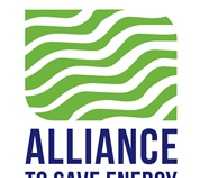Clean Power Plan stands on firm legal ground, would continue trend of clean energy cutting carbon pollution reliably and cost-effectively
Washington, D.C., September 28, 2016 – (RealEstateRama) — As the U.S. Court of Appeals for the D.C. Circuit hears oral arguments today about the merits of the Clean Power Plan, the Environmental Protection Agency’s (EPA) rule placing the first-ever federal carbon pollution limits on our nation’s electric power plants, the American Wind Energy Association (AWEA) issued the following statement.

“The clean-energy train has already left the station in the form of affordable renewable energy already making major carbon pollution reductions today. The Clean Power Plan reasonably builds on these existing trends in the power sector that have allowed many states to reliably and cost-effectively slash carbon pollution at a rapid rate over the last decade through investment in clean sources of electric generation, like wind power. We fully expect the D.C. Circuit to agree that EPA correctly took these facts into account in considering well-established pollution control measures, such as renewable energy, when establishing carbon reduction standards for power plants under the plan.”
“As we are confident that the plan will ultimately be upheld by the courts, states only stand to gain by developing cost-effective plans to reduce their carbon emissions, which will deliver better air quality, improved public health, clean energy investment, good-paying jobs, and make meeting inevitable carbon regulations easier, regardless of the fate of the case. Thanks to its combination of low-cost and zero emissions, wind energy remains a primary way for states to reduce carbon emissions, save consumers moneyand keep the lights on in homes and businesses across the country. Americans can look to states like Colorado where wind energy at times has produced more than 60 percent of its main electricity demand, while benefiting consumers through added economic benefits and hundreds of millions of dollars in savings.” – Tom Kiernan, CEO of AWEA.
Thanks to technological advances wind power’s costs have dropped by two-thirds over six years and according to the U.S. Energy Information Administration (EIA) wind energy can supply the majority of the lowest-cost Clean Power Plan compliance mix.
Wind plants now provide the same reliability services as conventional power plants. At times wind has supplied more than 45 percent of electricity on the main Texas grid and more than60 percent on the main utility system in Colorado. Other states, including Iowa, South Dakota and Kansas, reliably produce more than 20 percent of their electricity from wind power; in 12 states wind generates 10 percent or more, and 20 states generate five percent or more with wind. Wind at five percent of the U.S. power grid already reduces over five percent of power sector emissions, and 20 percent wind will reduce power sector carbon by 20 percent.
AWEA is part of an unprecedented coalition intervening to defend the Clean Power Plan.
For a library of up-to-date library images of wind energy use this linkhttp://www.awea.org/MediaCenter/content.aspx?ItemNumber=7244
AWEA is the national trade association of the U.S. wind energy industry, with over 900 member companies, including global leaders in wind power and energy development, wind turbine manufacturing, component and service suppliers, and the Western Hemisphere’s largest wind power trade show, the AWEA WINDPOWER Conference & Exhibition, which takes place next in Anaheim, California, May 22-26, 2017. AWEA is the voice of wind energy in the U.S., promoting renewable energy to power a cleaner, stronger America. Look up information on wind energy at the AWEA website. Find insight on industry issues at AWEA’s blog Into the Wind. Join AWEA on Facebook. Follow AWEA on Twitter.













